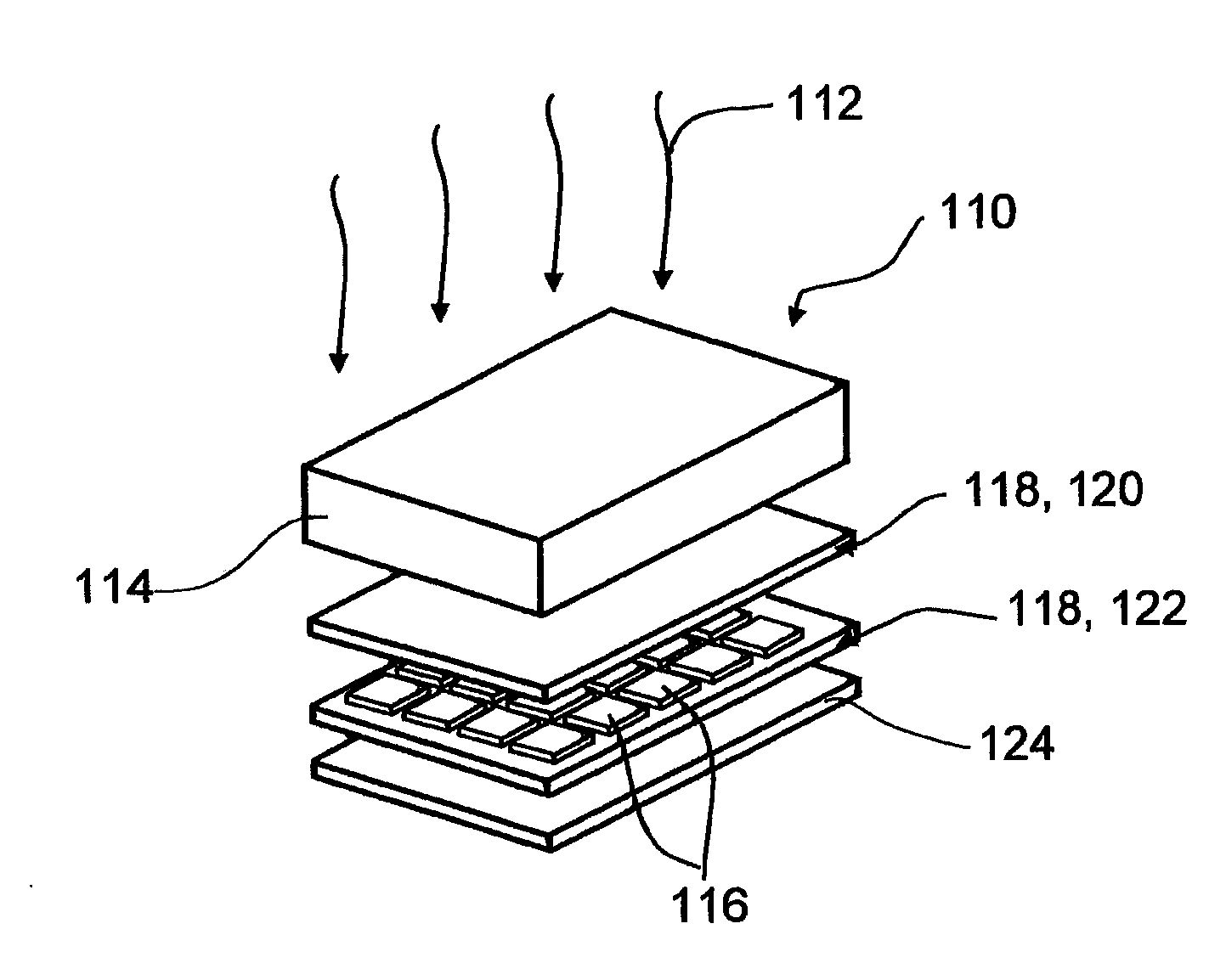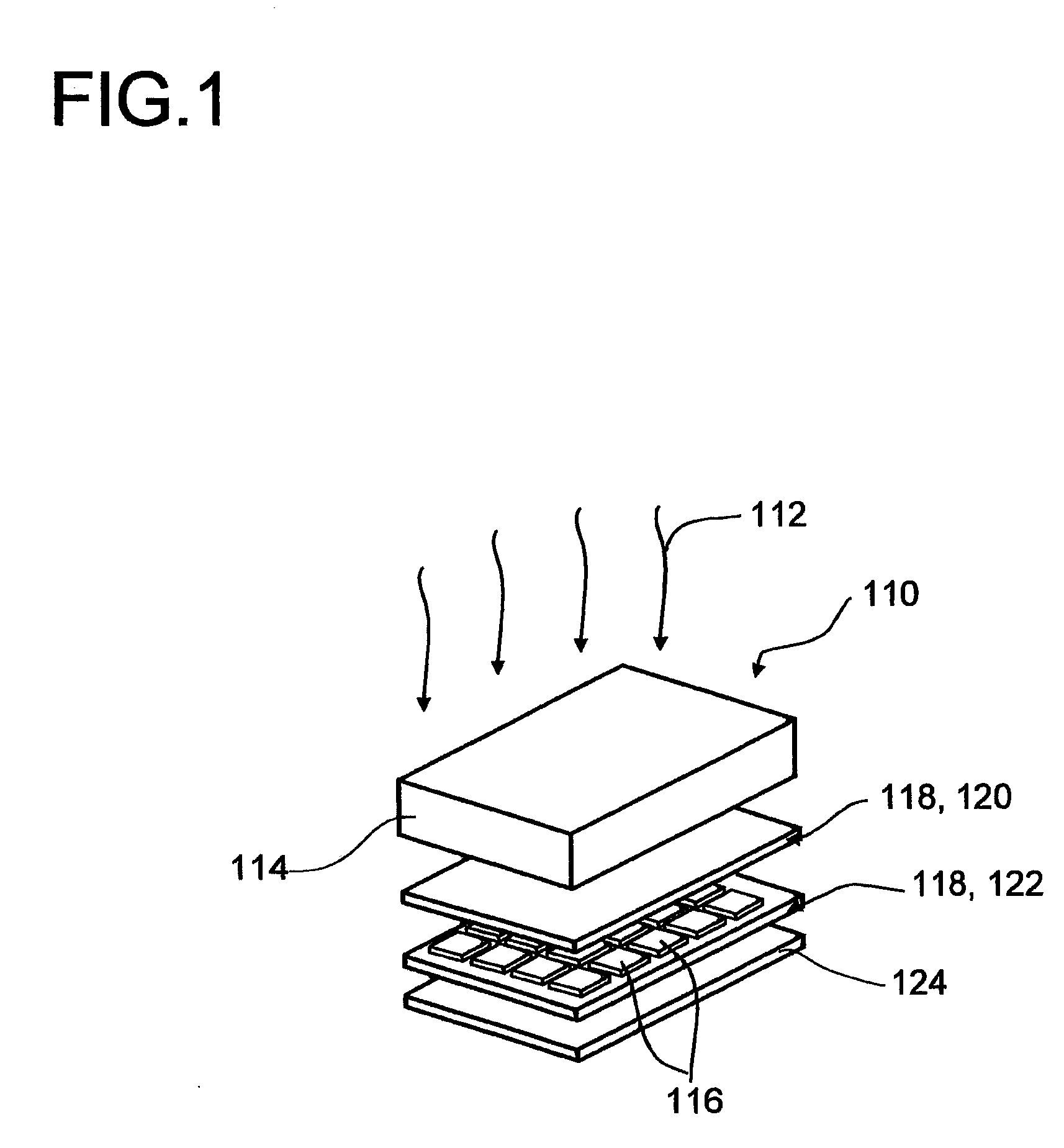Photovoltaic modules with improved quantum efficiency
a photovoltaic module and quantum efficiency technology, applied in semiconductor devices, layered products, chemical instruments and processes, etc., can solve the problems of luminescence downshifting materials into photovoltaic modules, poor spectral response of short-wavelength light, and many photovoltaic modules produced in a large-scale production environmen
- Summary
- Abstract
- Description
- Claims
- Application Information
AI Technical Summary
Benefits of technology
Problems solved by technology
Method used
Image
Examples
Embodiment Construction
[0036]For a more complete understanding of the present invention, reference is established to the following description of preferred embodiments made in connection with the accompanying drawings, in which:
[0037]FIG. 1 shows a perspective view of a preferred embodiment of a photovoltaic module.
[0038]In FIG. 1, a perspective view of a preferred embodiment of a photovoltaic module 110 according to the invention is depicted. The embodiment is intended for illustrative purposes only, and the invention is not limited to the embodiment as depicted.
[0039]The photovoltaic module 110 is adapted for converting electromagnetic radiation (in FIG. 1 symbolically denoted by referential 112), preferably visible, infrared and / or ultraviolet light, into electric energy. For this purpose, the photovoltaic module 110 comprises a transparent cover sheet 114, which may be composed of one or more of the materials listed above, and which preferably comprises glass, preferably low-iron soda lime glass, and / ...
PUM
| Property | Measurement | Unit |
|---|---|---|
| quantum efficiency | aaaaa | aaaaa |
| optical density | aaaaa | aaaaa |
| optical density | aaaaa | aaaaa |
Abstract
Description
Claims
Application Information
 Login to View More
Login to View More - R&D
- Intellectual Property
- Life Sciences
- Materials
- Tech Scout
- Unparalleled Data Quality
- Higher Quality Content
- 60% Fewer Hallucinations
Browse by: Latest US Patents, China's latest patents, Technical Efficacy Thesaurus, Application Domain, Technology Topic, Popular Technical Reports.
© 2025 PatSnap. All rights reserved.Legal|Privacy policy|Modern Slavery Act Transparency Statement|Sitemap|About US| Contact US: help@patsnap.com


